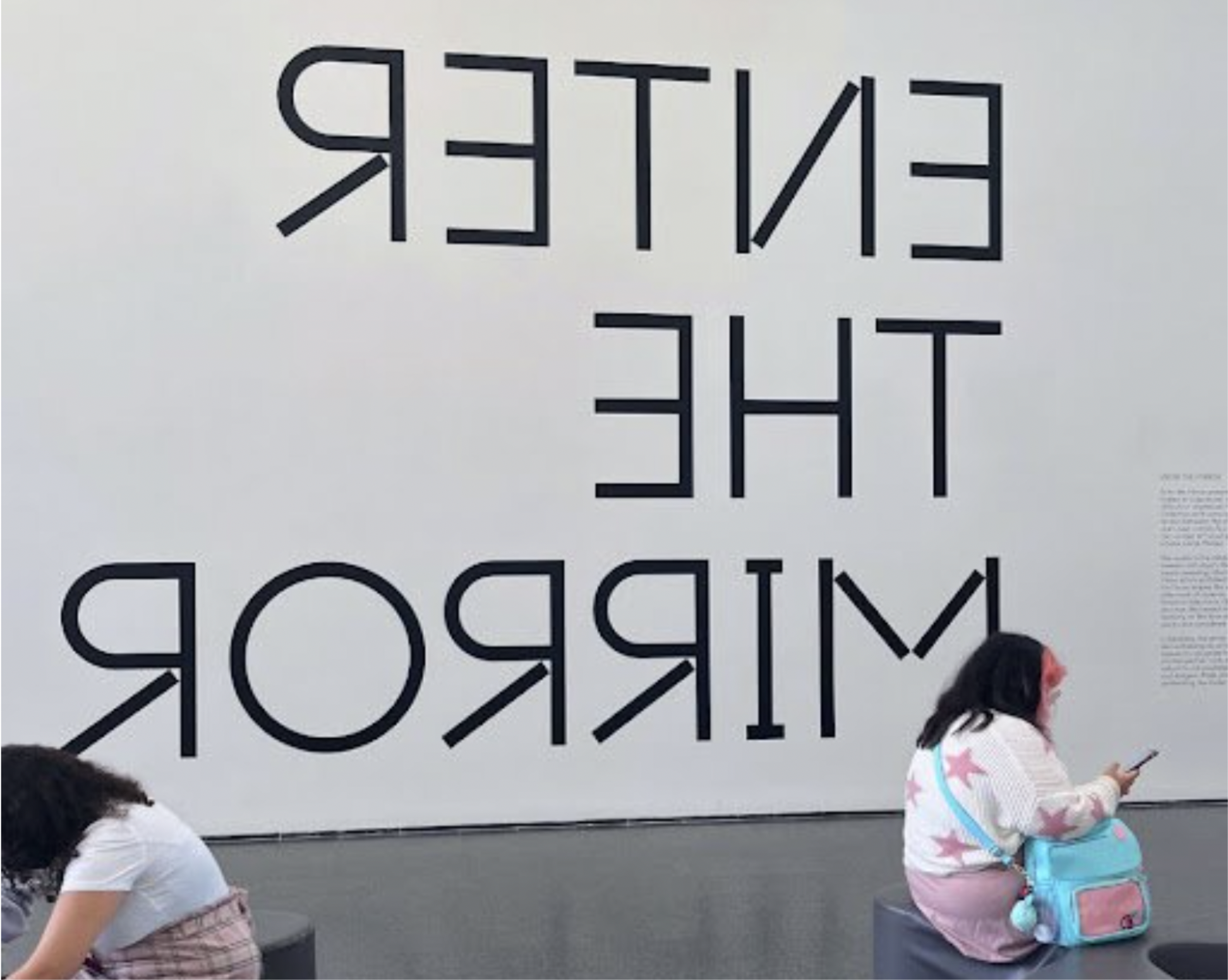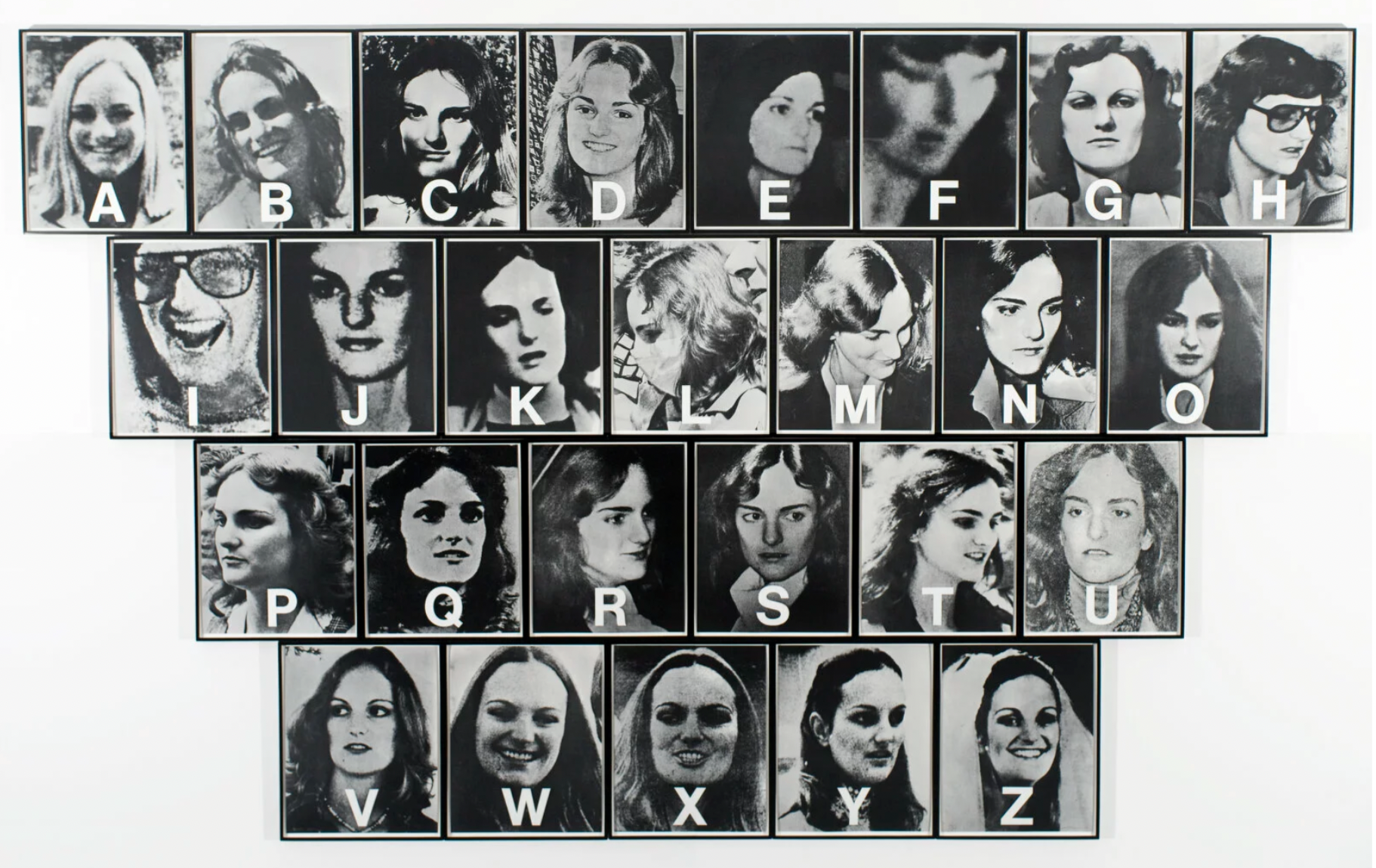REVIEW: “Enter The Mirror” at The Museum of Contemporary Art Chicago
Exhibition Entrance of Enter The Mirror, 2022-2023. Photo by MCA Chicago Twitter.
REVIEW
Enter the Mirror
Sept 10, 2022–July 23, 2023
Museum of Contemporary Art
20 E Chicago Ave.
Chicago, IL 60611
By Meredith Wood Bahuriak
The Museum of Contemporary Art Chicago is presenting Enter The Mirror, where each piece calls us to acknowledge truths that are difficult or unpleasant to see. In artworks spanning the late 1970s to the mid–2010s, artists grapple with violence, trauma, corruption, historical distortion, and the abuse of power, bearing witness to the unmistakable ways that these forces have shaped our contemporary world. In a moment when the willful refusal to confront facts and history is dangerously common, Enter the Mirror asks us to do the opposite: to “enter the mirror” and see our complicity in the world around us reflected in the powerful work of 20 artists.
Enter the Mirror is filled with literal noise. Upon entering the gallery you can hear Adrian Piper’s voice speaking softly, but directly from a TV in the corner about race, racism, and identity. Piper’s 1988 video installation, “Cornered,” invites you to sit, listen and learn something. She says directly to the camera, “How will you feel about being certifiably white? Will you feel relieved? Or will you feel disappointed? Deprived of something special. Perhaps you’ll lie and tell people that you’re Black even though you’re not.”
On the opposite side of the gallery is “Partially Buried 1960s/70s Dystopia Revealed (Mick Jagger at Altamont) & Utopia Reflected (Wavy Gravy at Woodstock),” Sam Durant’s two mounds of dirt that have buried audio from Wavy Gravy’s welcome announcement at Woodstock and The Rolling Stone’s set at the Altamont Speedway Free Festival.
Alongside the same corner is “Patricia Hearst - A Thru Z,” Deniss Adams’s conceptual psychological portrait of newspaper publishing heiress Patricia “Patty” Hearst and consists of 26 headshots cropped from newspapers detailing the Patty Hearst kidnapping, including her involvement in a bank robbery, subsequent trial, and marriage to a former police officer.
Dennis Adams, Patricia Hearst – A Thru Z, 1979/1990. Collection Museum of Contemporary Art Chicago, gift of Howard and Donna Stone, 1996.29.a-ee. © Dennis Adams 1979/1990. Photo: Nathan Keay, © MCA Chicago.
Amongst the sound echoing throughout the gallery is a large steel- and copper-plated Chris Burden piece, “The Other Vietnam Memorial” (1991). On a dozen thirteen-foot copper plates, Burden etched the names of the three-million Vietnamese killed during the Vietnam War. In response to Maya Lin’s Vietnam War Memorial in Washington D.C., which only named the Americans who were killed, Burden’s piece confronts the other side and forces us to look into the mirror.
In “The Fence,” Willie Doherty captures a fenced area near the border of Northern Ireland and the Republic of Ireland where military checkpoints once stood during the period known as the Troubles or the Northern Ireland conflict. Doherty’s photograph is tightly cropped, focused on a wire fence cutting through overgrown grass. Leaving the viewer’s position unclear whether they are being contained or being kept out - the photograph is intended to bring the viewer inside the space of the image and into dialogue with the landscape, which bears the traces of a fraught past.
Willie Doherty, The Fence, 1996. Collection Museum of Contemporary Art Chicago, gift from the Howard and Donna Stone Collection, 2002.20. © 1996 Willie Doherty. Photo: Nathan Keay, © MCA Chicago.
In “Untitled (Buffalo),” David Wojnarowicz appropriated this dramatic image of buffalo tumbling off a cliff from a natural-history diorama in Washington D.C. The photograph can be seen as the artist‘s response to his own AIDS diagnosis, which led to his death in 1992 at the age of 37. The AIDS epidemic swept the nation during the 1980s and disproportionately impacted a generation of gay men. Wojnarowicz draws a parallel between the sense of doom evoked by AIDS and the wholesale extermination of the buffalo.
David Wojnarowicz. Untitled (Buffalo), 1988–89. Collection Museum of Contemporary Art Chicago, gift of Stephen Solovy Art Foundation, 1992.93. © 1988-89 David Wojnarowicz. Photo: Nathan Keay, © MCA Chicago.
In the center of the gallery is Shilpa Gupta’s, “WEARECLOSERTHANYOUEVERIMAGINED” (2020), which is a motion flipboard used at airports and train stations. The changing text was written before and during the lockdown and displays anxiety and turmoil. The rapid sound of the flipping letters resemble this rampant despair.
One of my favorites, Erika Rothenberg's, “America's Joyous Future,” is displayed immediately along the exhibition entrance/exit. Rothenberg’s signboard can be viewed as an indictment of both organized religion and the growing role of disorders in American self-definition and social involvement. Perhaps this piece spoke to me because I see similar signboards on an almost daily basis and I hope to view them differently.
Erika Rothenberg, America’s Joyous Future, 1990–91. Collection Museum of Contemporary Art Chicago, gift of Mr. and Mrs. E.A. Bergman by exchange, 1991.75. © 1990-91 Erika Rothenberg. Photo © MCA Chicago.
These words and these artworks all address the very real abuse of power, constant racism, and threat of violence that occurs nationally and globally. While viewers come into the gallery, meditate and ponder what they see, they are forced to look at themselves and their response to these actions. How can we make a change in the world to end suffering? To end war. To end racism. To end bigotry.
But when exiting the gallery, we leave the mirror behind and are complicit again. Looking at injustice in the gallery, we directly face it but back on Chicago Avenue, we catch the bus and ride safely home.
Enter The Mirror is on exhibit now through July 23rd, 2023 at The Museum of Contemporary Art Chicago. The Museum of Contemporary Art Chicago is open at 10 a.m. - 9 p.m. on Tuesday and 10 a.m. - 5 p.m. on Wednesday - Sunday. Monday, The Museum of Contemporary Art Chicago is closed. Tickets are $15 Adults, $8 Students, and Free for MCA Members and anyone 18 and under.
The artworks in the exhibit rotate over time as follows:
Edgar Arceneaux
Beatriz González [1]
Shilpa Gupta
[1] On view September 10–December 11, 2022
[2] On view December 14, 2022–April 2, 2023
[3] On view April 4–July 23, 2023
Like what you’re reading? Consider donating a few dollars to our writer’s fund and help us keep publishing every Monday.






